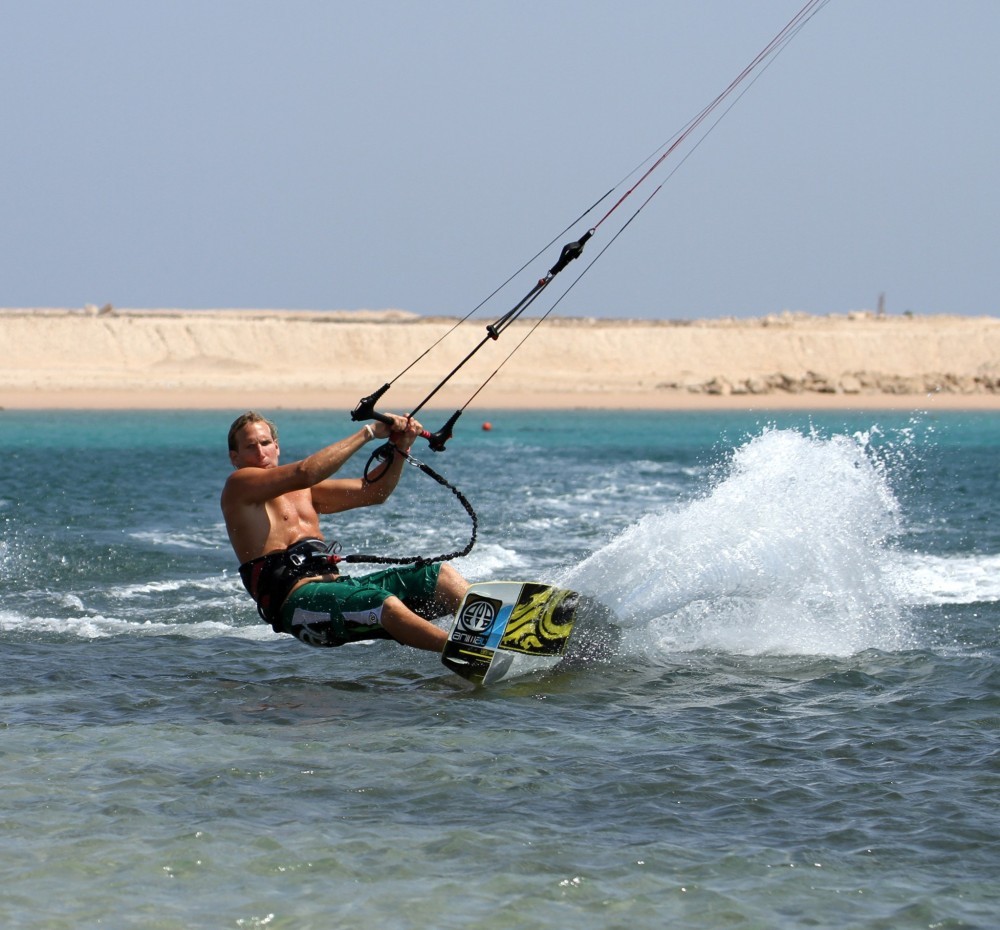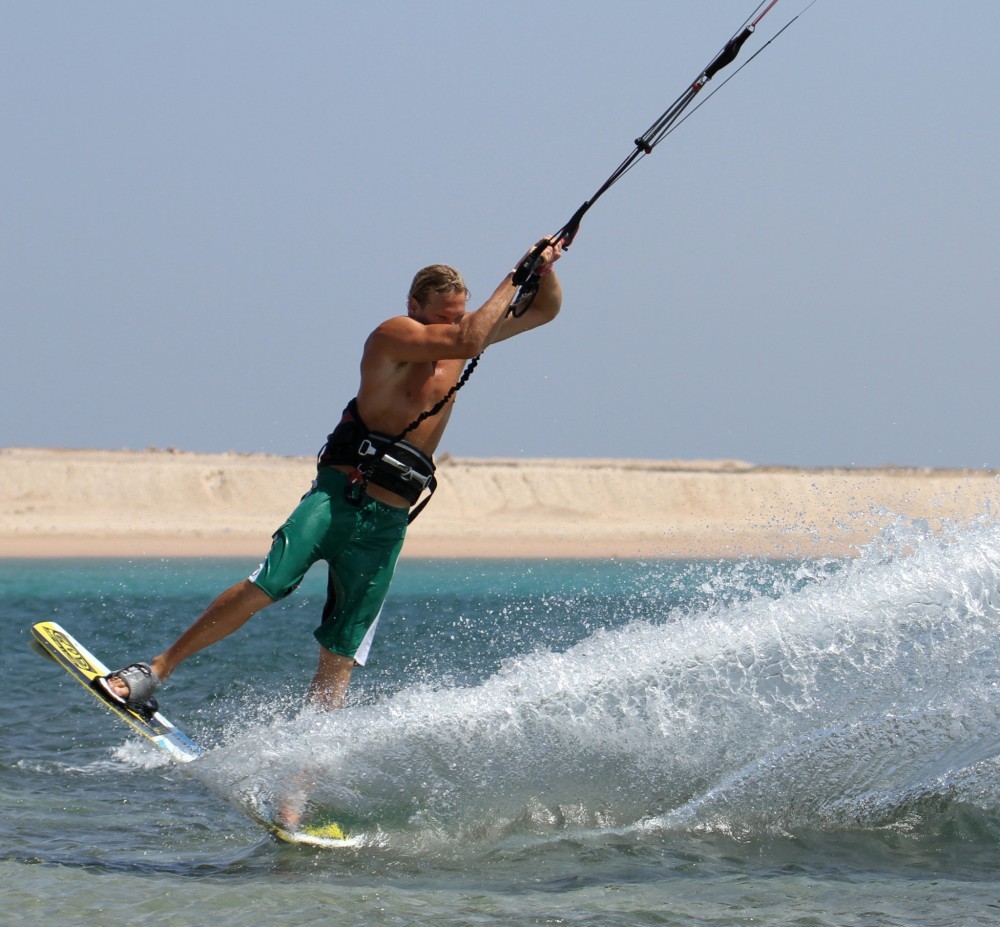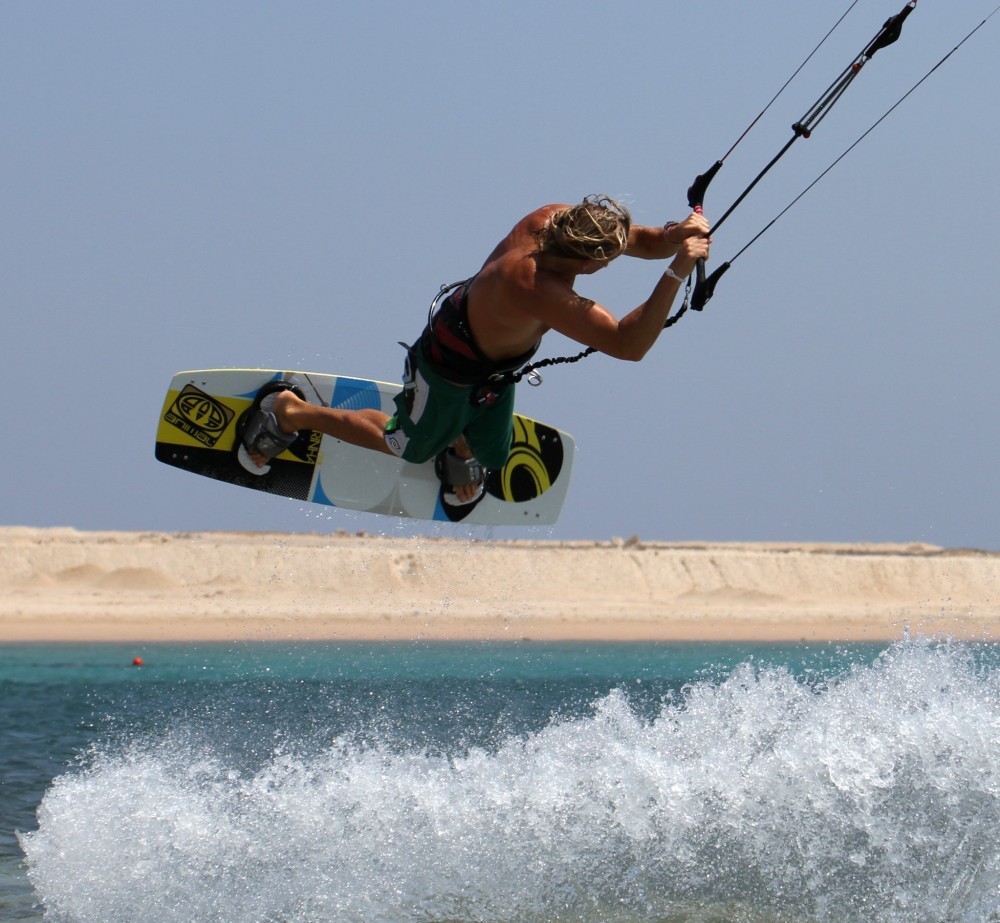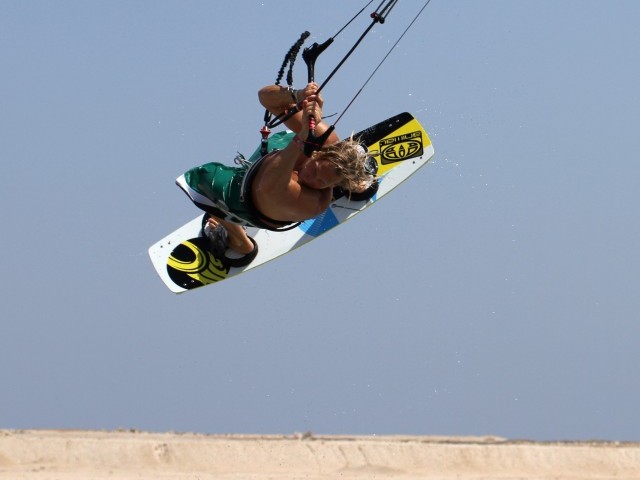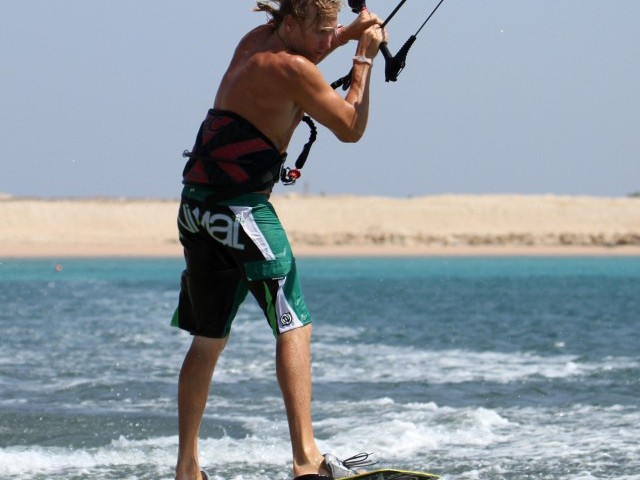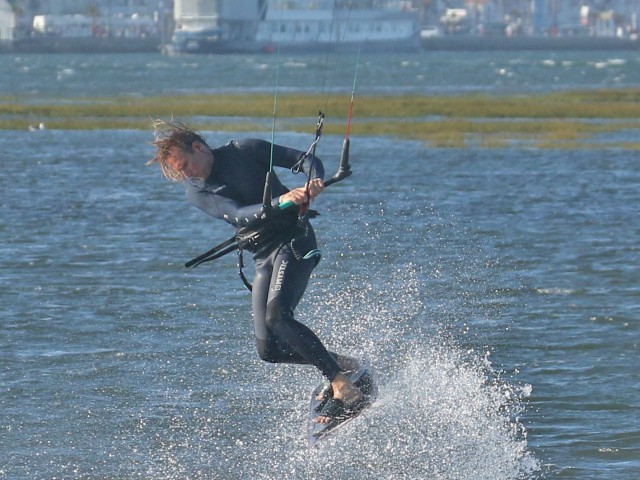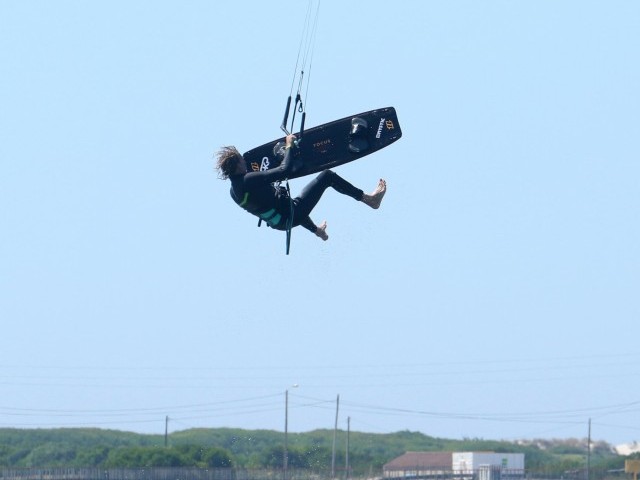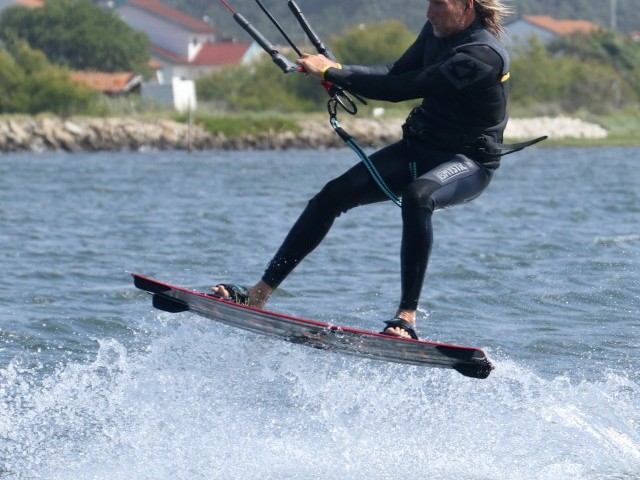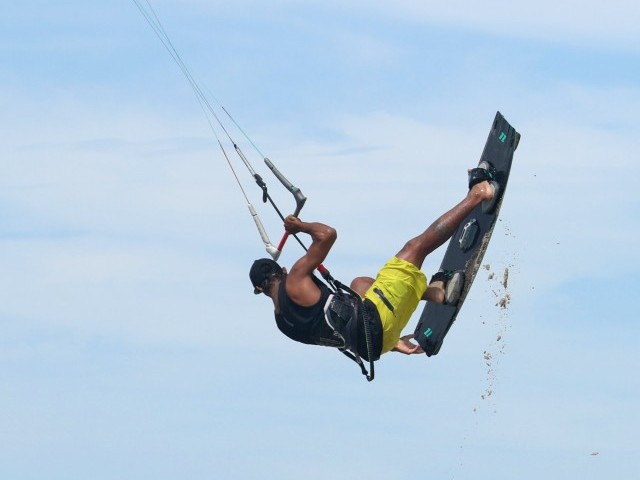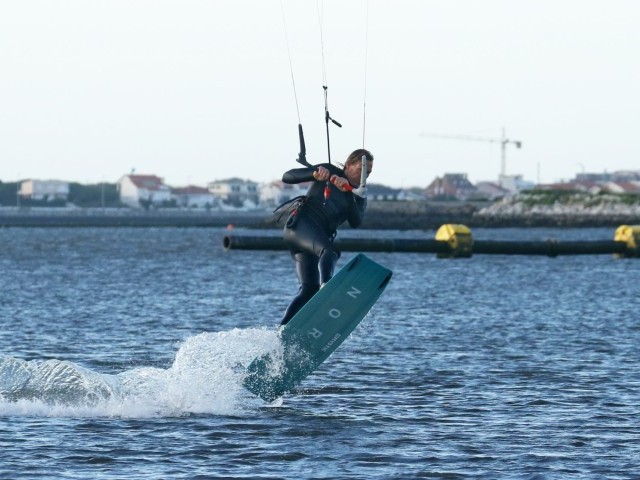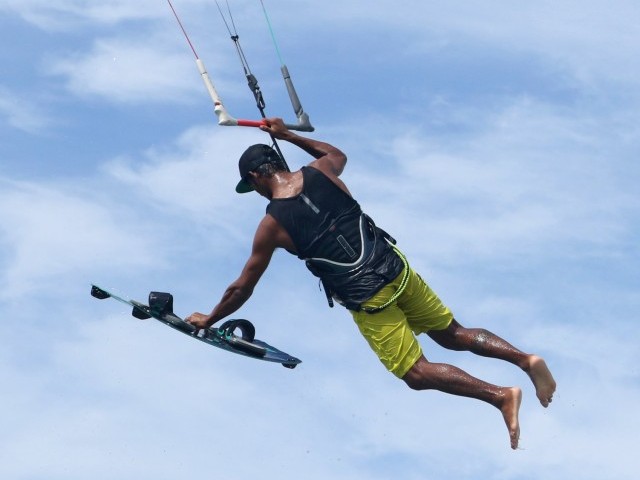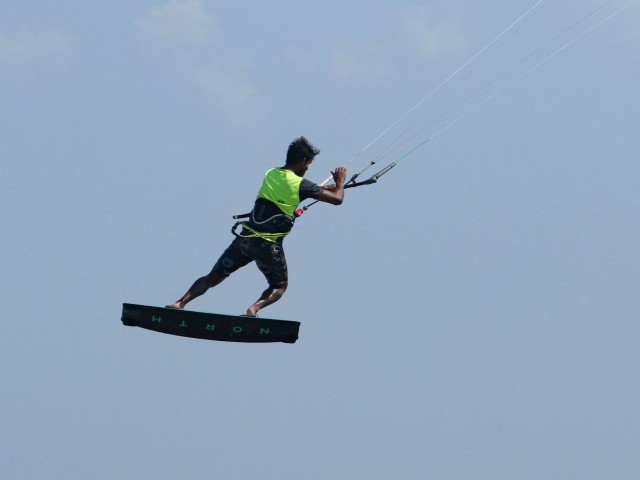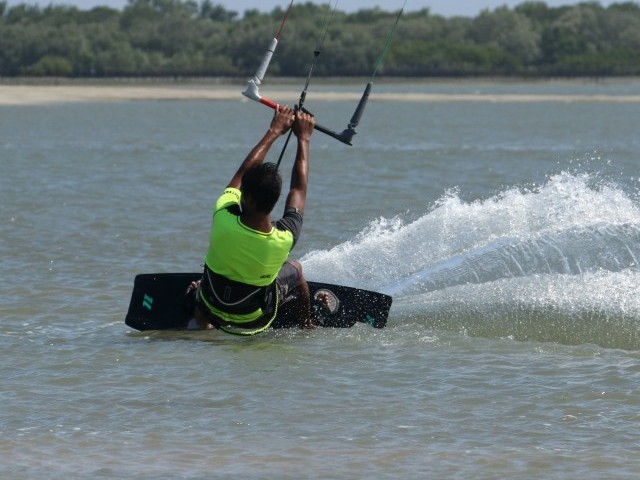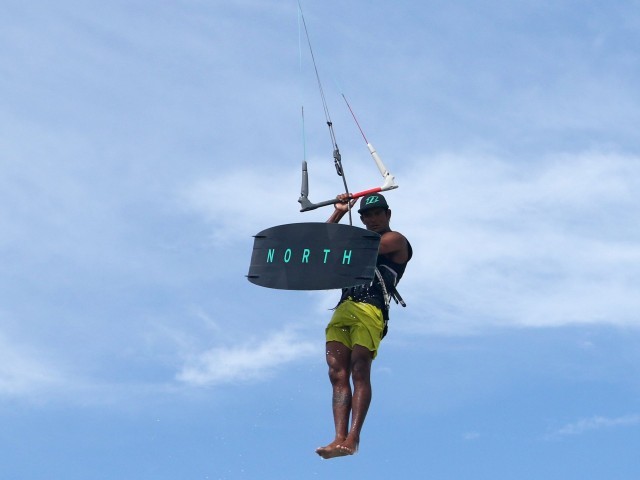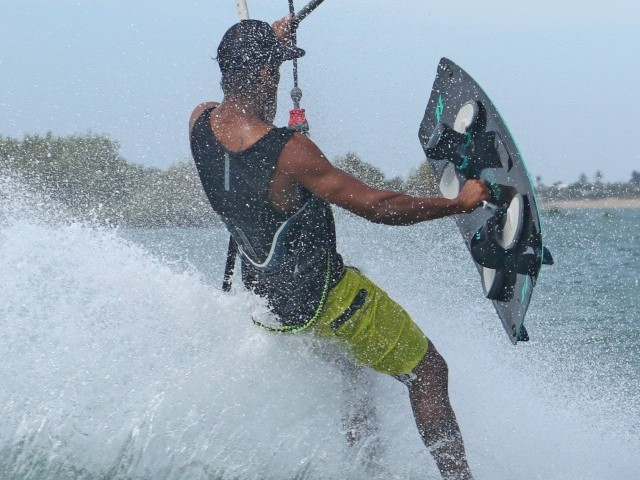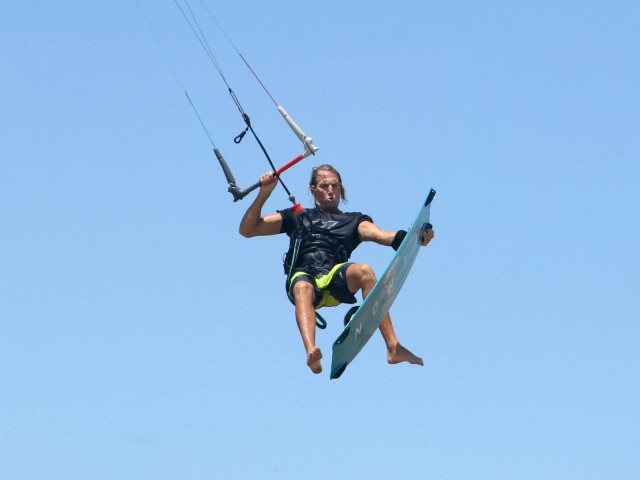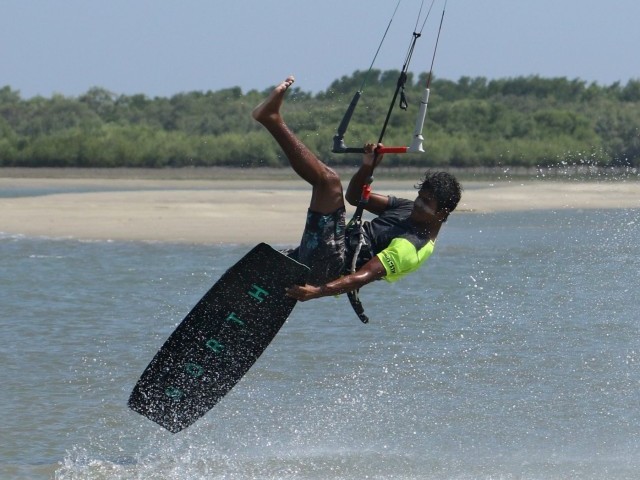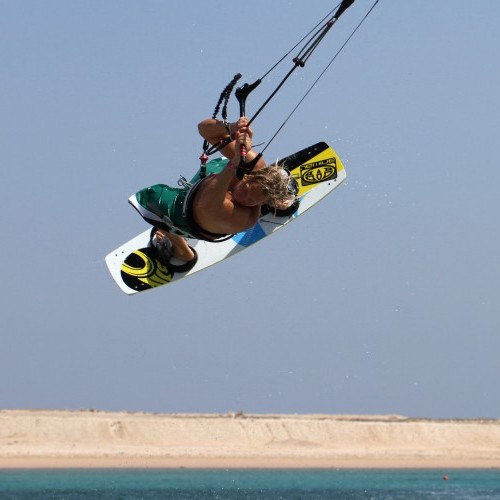
S-Bend
Technique / Advanced
Introduction
Without wanting to open up a tin of worms and start some huge debate here’s a look at how to learn the S-Bend. It’s a fairly controversial move in its own right, as the definition of an S-Bend will vary depending on whom you speak to. Purists will expect boots and a lot of inversion throughout the rotation which is a fair expectation as its a move borrowed from the wake world. Whilst those eager to learn will label their first unhooked front rolls with the same tag.
In essence it should be a relatively powered unhooked forward rotation, with the kite definitely below the 1 or 11 mark, and an effort should be made to hold off the rotation until after take off and the front leg has straightened. The other defining factor is the rotation itself, as it should be lead by the head and shoulders, with the knees, feet and board coming around at the end, having been practically left behind, rather than tucking the front knee up as you go into it. The more power you take into this move and the lower that you can eventually get your kite, the closer you’ll get to the real deal.
However as with many an unhooked moved you’re more likely to learn it if you take some power out, inch the kite up a tiny bit and instead concentrate on the movements involved. With less power you’ll have the confidence to edge hard and wait that split second before rotating! In the clips and video Christian is powered enough to pop, but nothing more, so it’s down to the correct technique.
Pic A
This hows Christian carving back hard onto his edge after bearing away to unhook. Like all unhooked tricks you need to go off the wind to get your hips up, weight back and ditch power in the kite before edging. And this will also drop the kite slightly back in the window and make the down wind landing far more natural. All the time keeping your kite at a comfortable angle! Give yourself enough time to complete the move by starting with the kite around 11 or 1, and then throughout the move you can concentrate on bringing the kite down, rather than sneaking it up. The other important point here is the carve. Christian is edging super hard with his weight back and low, straight front leg and bum on the water. This way he’s really putting the board in between himself and the kite, and therefore he’s got a lot to stamp against to pop. It’s a common mistake by many kiters that when they think front or forward rotation they don’t get their weight low enough going into the move and therefore don’t get the necessary pop. Going into this should be like a raley so make sure you’ve got them dialled.
The pop! - Pic B
Christian has carved the board up hard and underneath him, just as he would for a raley, and at the moment when he felt he could no longer resist he has kicked his back leg away, explosively extending it and therefore popping against the board. The result is that he rises up whilst getting pulled towards the kite. This gives him the required height to spin. Without the stamp and resulting pop you’ll just get pulled across the board and stretched out. You can see that Christian’s back leg is turning away behind him and as yet there is no clue of a forward rotation. This is one of the secrets, unlike the front loop you are not using your kick from take off to initiate the rotation. Instead you wait to get airborne. It may only be a fraction of a second, but the first few attempts, it feels way too long.
Pic C
You can see that now with the board flicked behind him, Christian is going into his rotation. For the early attempts it is worth talking yourself through it – pop, extend, go – just to make yourself wait. The beautiful thing is that if you do wait, with the board behind you, you’ll be able to generate a surprisingly fast spin. You can see that Christian’s body, legs and board are pretty much in line with the lines of his kite, so in theory it’s the same as hanging underneath a kite or a bar, just aggressively turn your head and shoulders behind you and you’ll start to spin. You’re aiming to get your head around far enough that you’ll be able to see the water and where you want to land. Final point is the arms. You can see that Christian has his arms pulled slightly in, and certainly at first this is good practice as you’ll be able to keep the bar turning with your head and shoulders rather than leaving it behind. And as a result it’ll be far more achievable to stop the kite from drifting up.
Pic D
Half way through the rotation and already getting ready to land! Where the head leads the body will follow, and this really is the case. You can see that Christian has his head fully round, and that he’s focused on his landing spot. Also note that his bar is also around and in front of him. In simple terms with the bar and your head leading you will make it around. However to guarantee a complete rotation and a soft landing Christian pushes his hands down towards the water, which will turn his shoulders and then his body will follow. If your kite has snuck up this is the time to dive it, as the forward pull will help to swing you around. Remember that as your hands are close together you’ll need to pull and push to get the kite to dive. Once again you don’t want to try and bring your legs through yet as you’ll end up in a sitting position in the air, and you’ll land where it hurts.
Pic E
The downwind landing is a result of pushing the hands down and trying to keep the bar near you. If you do that your head and shoulders are kept up, whilst gravity swings your feet and more importantly your board back underneath you. If you aim to pull the bar in towards your front him this may help, but just getting the bar in close should be enough.
Top Tips
Bang out a few raleys before trying your S-Bend, as its an add on, not a different move. This way you can find a kite position that gives you some time in the air, but also allows you to edge and pop hard. Whilst practising the raleys think about letting your legs extend behind you. Once you’ve done this a few times you’ll be ready for the first spin, and as a famous sports brand other than Animal once said – “just do it”. Going for the first late spin is more of a mental challenge than a physical one and once you’ve broken the ice you’ll be able to continue with gusto.
Think about waiting for 1 count before initiating the spin. This gives your legs time to rise and guarantees a quick rotation. So pop hard, think extend and then go!
Keep your arms slightly bent so your head is over the bar. Once your arms are straight and squashed against your ears its very hard to keep the kite steady and you won’t be able to push your hands and shoulders around for the last bit of rotation.
Following Sequence 1
- Pic 1. Having approached with his kite just under 1 o’clock, so that its driving forward, Christian unhooks downwind, weight back over the tail of the board, hips up and carves hard upwind on the tail of his board.
- Pic 2. As the kite starts to pull him up Christian explodes up of his back leg, kicking hard off the board.
- Pic 3. As the board travels under him and flicks back, Christian keeps his elbows in close and leans gently on his front hand to stop the kite rising.
- Pic 4. With the board now behind him Christian aggressively turns his shoulder down and head back to initiate his spin.
- Pic 5. With his body and board in line with his kite Christian will spin effortlessly.
- Pic 6. Half way round and Christian’s main aim is to look for the water so that he can spot his landing and keep spinning.
- Pic 7. With his head now turned Christian knows where he is and..
- Pic 8. He pushes his bar down and around under his head.
- Pic 9. With the bar now in front of him, Christian’s shoulders and hips follow.
- Pic 10. Christian focuses on where he’ll land and keeps the bar in close and the kite steered down.
- Pic 11. Gravity does the rest, swinging his legs and board down underneath him for a soft down wind landing.
Common Problems
Kite going up. Make a point of steering the kite down a little as you take off. This will reset it in a good position and make you wait that tiny bit longer before rotating.
Not completing the rotation. Firstly check that you are popping hard enough. If you know that you’re holding back a bit on the pop, change down a size and give it your all. If you are popping hard and not completing the rotation you either have your arms too straight or your kite to low. You’ll know if your kite is too low because it’ll be crashing as you do. Keep your arms in so you can push the bar down. And if you’re kite is moving down consider moving your bottom hand up so that you hold the main de-power line between you first and second fingers in a spit grip.
Landing on the crown jewels or your bum. Fair game in a wetsuit, unpleasant in boardies or a bikini! If the board is in front of you when you land you are bringing your front knee through to rotate and your feet are leading. Let the board swing behind you before you spin.
Keystones
- Pop hard
- Extend legs
- Arms in
- Front shoulder down and head looking back
- Push bar around in front of you!
This technique article was in Issue 29 of IKSURFMAG.
Related
By Christian and Karine
Christian and Karine have been working together as a coaching team, running improver to advanced kitesurfing clinics since 2003.







